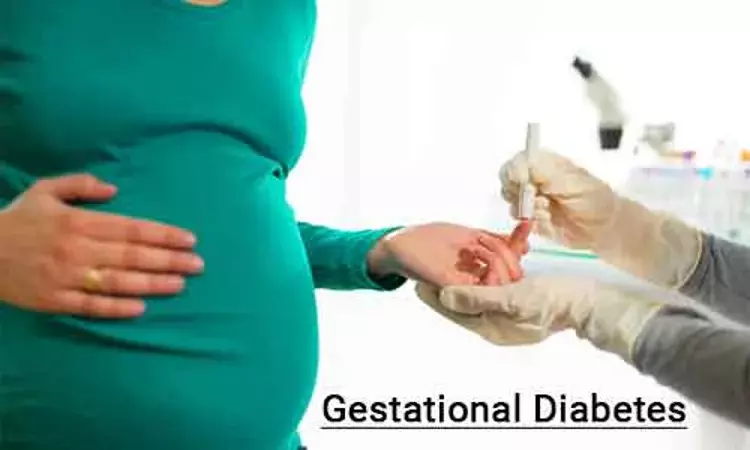- Home
- Medical news & Guidelines
- Anesthesiology
- Cardiology and CTVS
- Critical Care
- Dentistry
- Dermatology
- Diabetes and Endocrinology
- ENT
- Gastroenterology
- Medicine
- Nephrology
- Neurology
- Obstretics-Gynaecology
- Oncology
- Ophthalmology
- Orthopaedics
- Pediatrics-Neonatology
- Psychiatry
- Pulmonology
- Radiology
- Surgery
- Urology
- Laboratory Medicine
- Diet
- Nursing
- Paramedical
- Physiotherapy
- Health news
- Fact Check
- Bone Health Fact Check
- Brain Health Fact Check
- Cancer Related Fact Check
- Child Care Fact Check
- Dental and oral health fact check
- Diabetes and metabolic health fact check
- Diet and Nutrition Fact Check
- Eye and ENT Care Fact Check
- Fitness fact check
- Gut health fact check
- Heart health fact check
- Kidney health fact check
- Medical education fact check
- Men's health fact check
- Respiratory fact check
- Skin and hair care fact check
- Vaccine and Immunization fact check
- Women's health fact check
- AYUSH
- State News
- Andaman and Nicobar Islands
- Andhra Pradesh
- Arunachal Pradesh
- Assam
- Bihar
- Chandigarh
- Chattisgarh
- Dadra and Nagar Haveli
- Daman and Diu
- Delhi
- Goa
- Gujarat
- Haryana
- Himachal Pradesh
- Jammu & Kashmir
- Jharkhand
- Karnataka
- Kerala
- Ladakh
- Lakshadweep
- Madhya Pradesh
- Maharashtra
- Manipur
- Meghalaya
- Mizoram
- Nagaland
- Odisha
- Puducherry
- Punjab
- Rajasthan
- Sikkim
- Tamil Nadu
- Telangana
- Tripura
- Uttar Pradesh
- Uttrakhand
- West Bengal
- Medical Education
- Industry
Lower glycemic criteria for gestational diabetes diagnosis no better than higher glycemic criteria: NEJM

New Zealand: The use of lower glycemic criteria compared to higher glycemic criteria for gestational diabetes diagnosis did not reduce the risk of large-for-gestational-age infants, according to results from the GEMS trial. The study was published in the New England Journal of Medicine on August 18, 2022.
It is known that gestational diabetes treatment betters maternal and infant health but there is no clarity on its diagnostic criteria. To fill this knowledge gap, Caroline A. Crowther, Liggins Institute, University of Auckland, Auckland, New Zealand, and colleagues conducted the study with an aim to improve the benefits of screening for gestational diabetes and minimize potential harms.
The study included women at 24 to 32 weeks gestation. They were randomly assigned in the ratio of 1:1 to be evaluated for gestational diabetes with the use of lower or higher glycemic criteria for diagnosis.
The lower glycemic criterion was a fasting plasma glucose level of at least 92 mg per deciliter, a 1-hour level of at least 180 mg per deciliter, or a 2-hour level of at least 153 mg per deciliter. The higher glycemic criterion was a fasting plasma glucose level of at least 99 mg per deciliter or a 2-hour level of at least 162 mg per deciliter.
The main outcome was the birth of an infant who was large for gestational age -- defined as a birth weight above the 90th percentile according to Fenton–World Health Organization standards. Maternal and infant health were the secondary outcomes. A total of 4061 women underwent randomization.
- Gestational diabetes diagnosis was made in 310 of 2022 women (15.3%) in the lower-glycemic-criteria group and in 124 of 2039 women (6.1%) in the higher-glycemic-criteria group.
- Among 2019 infants born to women in the lower-glycemic-criteria group, 8.8% were large for gestational age, and among 2031 infants born to women in the higher-glycemic-criteria group, 8.9% were large for gestational age.
- Induction of labor, use of health services, use of pharmacologic agents, and neonatal hypoglycemia were more common in the lower-glycemic-criteria group than in the higher-glycemic-criteria group.
- The results for the other secondary outcomes were similar in the two trial groups, and there were no substantial between-group differences in adverse events.
- Among the women in both groups who had glucose test results that fell between the lower and higher glycemic criteria, those who were treated for gestational diabetes (195 women), as compared with those who were not (178 women), had maternal and infant health benefits, including fewer large-for-gestational-age infants.
"Lower glycemic criteria for gestational diabetes diagnosis did not result in a lower risk of a large-for-gestational-age infant than higher glycemic criteria use," the researchers concluded.
Reference:
New England Journal of Medicine. Source Reference: Crowther CA, et al "Lower versus higher glycemic criteria for diagnosis of gestational diabetes" N Engl J Med 2022; DOI: 10.1056/NEJMoa2204091.
Dr Kamal Kant Kohli-MBBS, DTCD- a chest specialist with more than 30 years of practice and a flair for writing clinical articles, Dr Kamal Kant Kohli joined Medical Dialogues as a Chief Editor of Medical News. Besides writing articles, as an editor, he proofreads and verifies all the medical content published on Medical Dialogues including those coming from journals, studies,medical conferences,guidelines etc. Email: drkohli@medicaldialogues.in. Contact no. 011-43720751


